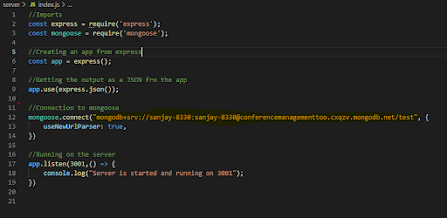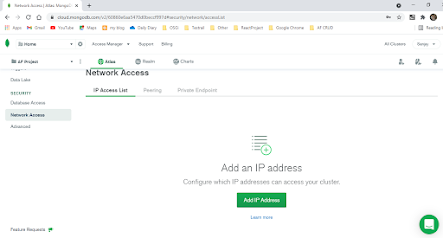👉 What is REST API?
* REST stands for Representational State Transfer.
* It is often used in development in web services. (designing loosely coupled applications over HTTP).
* It specifies highlevel design guidelines and leaves the implementation to be constructed by the developer.
* REST is an architectural design, its not either a protocol or a standard.
* When a client request through the REST API it transfers the resource state to the endpoint or requester.
* The response from the REST API may be a JSON, HTML, XML, PHP or even a plain text.
* The RESTful API HTTP request contain headers and parameters which consists of important identifier information such as request metadata, authorization, Uniform Resource Identifier (URI), cookies and more.
👉 What are the architectural constraints of REST API?
*
The above diagram shows the 6 main architectural constrains of the REST API. Although it states 6 the main constraints are only 5. The last constraint (Code-on-demand) is not that visible in the industry and either used in many instances.
1. Uniform Interface.
* Uniform interface gives us a simple idea of having a global language which can be understood by everyone.
* This is based on the HTTP specification.
* The person should be able to conclude that this is a RESTful API request by looking at the URI, HTTP verb.
* An example for a URI is https://sliit.lk/api
* Now lets look into some examples in handling a resource in REST API.
💥 Create a resource. POST v1/faculties
💥 Fetch a resource. GET v1/faculties
💥 Update the entire resource. PUT v1/faculties/{faculty.id}
💥 Delete a resource. DELETE v1/faculties
* Now lets create a department inside a faculty.
💥 POST v1/faculties/{faculty.id}/departments
* From the above example what is this faculty.id?
This is known as the route parameter. There can be multiple route parameters only if it makes a meaning. In many cases the route parameters are not numerous in an URI.
* What are query parameters?
These are used in sorting, pagination. These are optional in an URI. There can be multiple query parameters in an URI depending on the logic.
💥 POST v1/faculties?order-by=name
* This constrain states that the request has to self-contained.
* The server does not maintain the state of the client.
* This in turn can said as, in client-server communication the client information is not stored between the get request and each request is separated and unconnected.
3. Client-server.
* The REST API request and response follows a client server architecture.
* This has a client, server and a HTTP request and response.
* The HTTP stack is the communication platform between the server and the client.
* The REST services should be cacheable.
* In general the REST services are cacheable, but according to the business requirement the caching nature changes.
* Consider a banking system, where it is needed to store the account transaction details. But this system is non-cacheable due to security reasons.
* This constrain mainly hides the inner complexities from the client.
* In simple words, the inner business logic is not shown to the end user.
* The client only request and receive the response, in which he/she can see only the URL, not how the resource is handled according to the request.
6. Code-on-demand [OPTIONAL].
* This states that the server is able to transfer some code logics to the client, to execute them in the client side.
* This is not mainly done in the industry for security and performance issues.
* On the other hand if the code is transferred to the client, it becomes an over-head from the client and results in non-reliable nature.




















